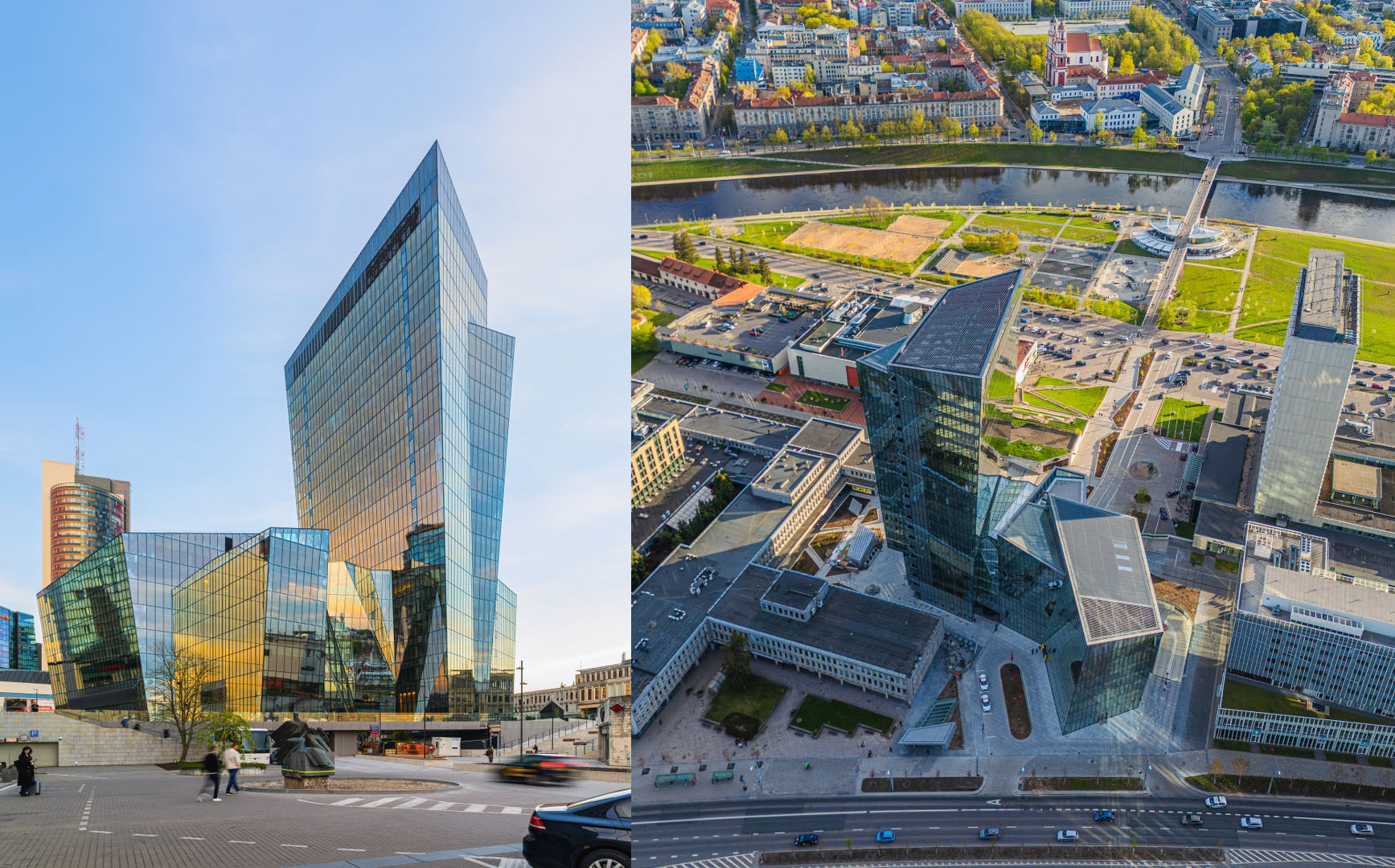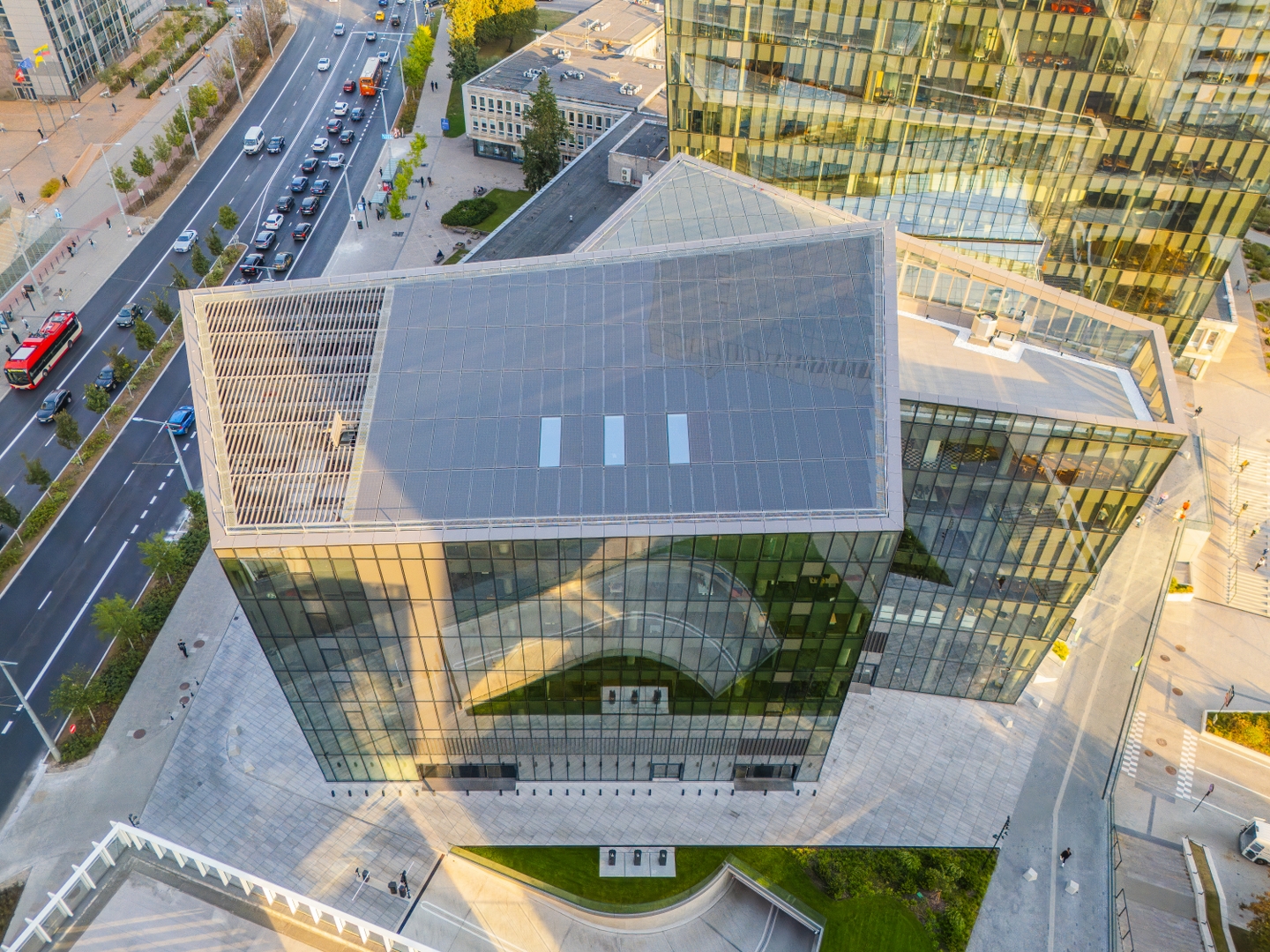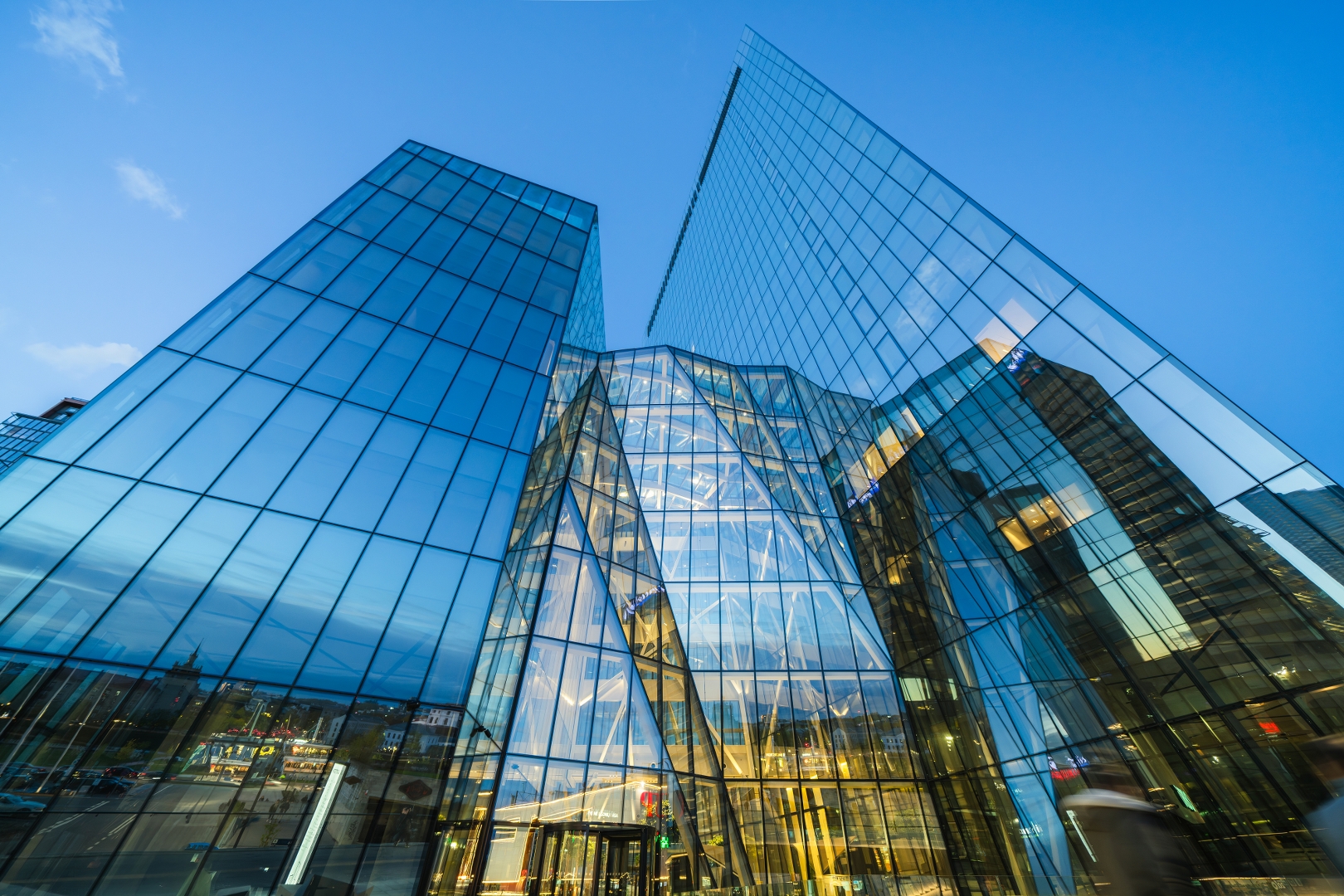
WARSAW WEST ULTRA-MODERN RAILWAY STATION
3 February 2025
GLASS WITH A QUANTUM COATING IN WINDOWS BY ML SYSTEM AT THE WIŚNICZ CASTLE
15 April 2025Daniel Libeskind, the award-winning founder of the studio, stated:
“Our goal was to create a symbol of modern architecture that could carry the essence of Vilnius’ Old Town into the future.”

ARTERY VILNIUSVisualization by Studio Libeskind150 Broadway, New York, USA© libeskind.com
AMONG SKYSCRAPERS, THE ROOFTOP BECOMES THE FIFTH ELEVATION
On the roof of the lower section, which serves as a multifunctional atrium, a photovoltaic installation has been planned, utilizing 500 m² of rooftop space. The aesthetics of the modules required customized color solutions and design details that fully align with the refined architectural aesthetics of the building.
VILNIUS CITY
The modern district of skyscrapers, ranging from 60 to 147 meters in height, has become a hallmark of Lithuania's capital. The Artery building, located in this area, stands at 84 meters tall with 20 floors. This skyscraper features unique architectural and engineering solutions. Numerous innovative technologies have been implemented to conserve and generate electricity, including a special elevator system and a photovoltaic power plant on the building's rooftop.


ML SYSTEM PRODUCTS:
PHOTOVOLTAIC MODULES: 8 mm Low Iron ESG + 50% ceramic printing / 8 mm float ESG + 100% ceramic printing
TOTAL SURFACE AREA: 498.6 m2
TOTAL PHOTOVOLTAIC INSTALLATION CAPACITY: 55.3 kWp

…the entire production process was carried out at the ML System facility, with customized printing and module colors meeting the architect's specifications.

Karol Kotowicz
Sales & Project Manager ML SYSTEM
For the ARTERY investment, we supplied 499 m² of custom photovoltaic modules made of ESG VSG laminated tempered glass with ceramic printing. The laminated modules consist of two 8mm ESG glass panes, with photovoltaic cells and a laminating film placed between them. The color scheme and type of ceramic printing fully met the architects' guidelines and expectations.
The entire production process was carried out on our production lines. The investor received a BIPV installation with an output capacity of 55.3 kWp, generating 36 MWh of clean energy annually. The installation helps reduce the building’s carbon footprint by 6,500 kg of CO2 per year—an amount that would be absorbed by 160 trees.



The installation consists of 146 modules, 35 of which have unique triangular or trapezoidal shapes. ML System's production lines enable the manufacturing of any shape and large-scale glass panels.


UNIQUE MODULE SHAPES
The trapezoidal outline of the roof resulted in irregularly shaped edge modules. The installation consists of 146 modules, 35 of which have unique triangular or trapezoidal shapes. ML System's production lines enable the manufacturing of any shape and large-scale glass panels. The largest modules produced for this project measure 3.45 m x 1.2 m.






















